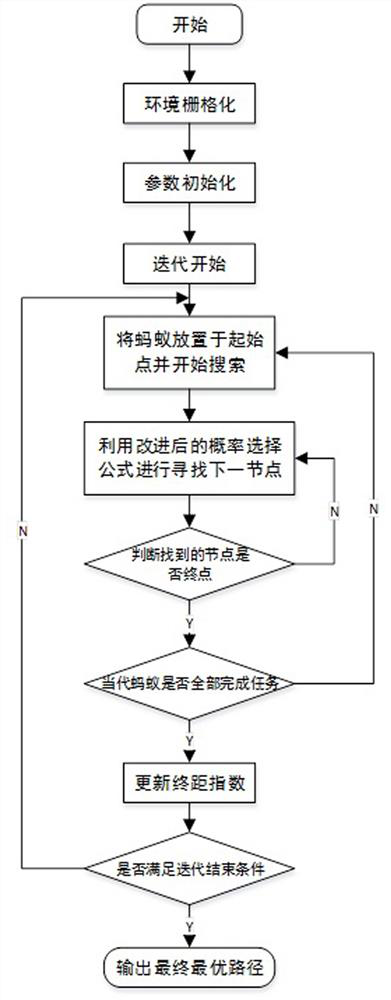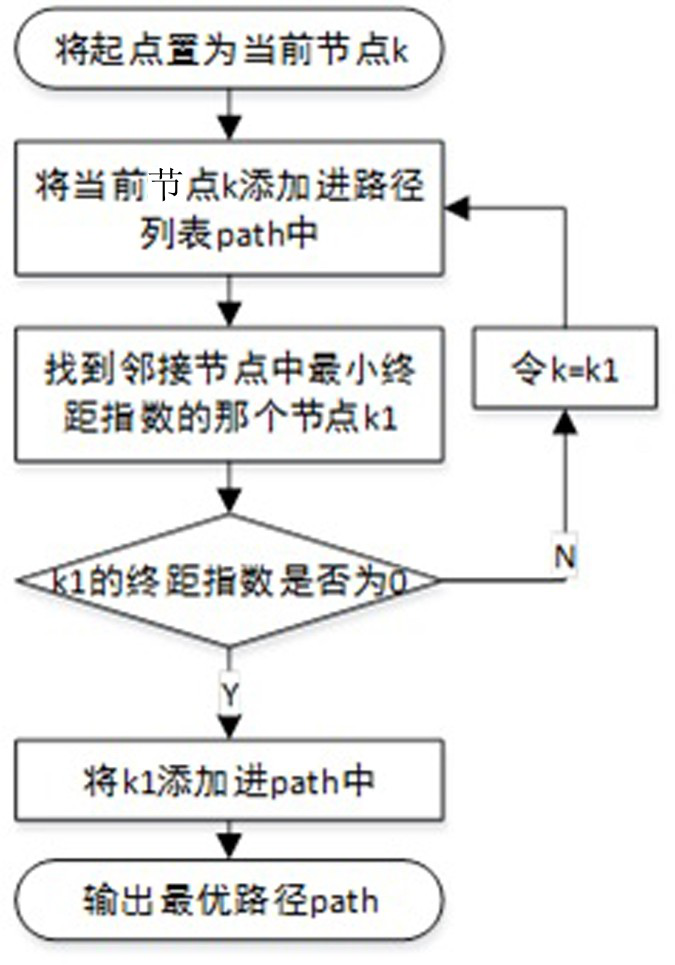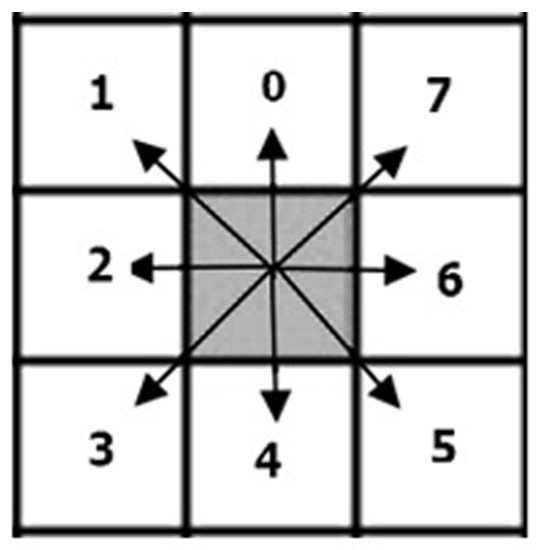Robot path planning method based on final distance index
A path planning and robot technology, applied in the directions of instruments, motor vehicles, road network navigators, etc., can solve the problems of pheromone concentration interference, slow convergence speed, affecting the correct rate of ants selection, etc., to improve efficiency, stability and performance. improved effect
- Summary
- Abstract
- Description
- Claims
- Application Information
AI Technical Summary
Problems solved by technology
Method used
Image
Examples
Embodiment Construction
[0040] like figure 1 As shown, the present invention provides a robot path planning method based on terminal distance index, comprising the following steps:
[0041] S1. Use the grid method to create a map of the robot's working environment, and define the starting point and target point;
[0042] S2. The ant colony algorithm is used to find the shortest path in the environment, and the ant colony algorithm is executed according to the following sub-steps:
[0043] S21. For any grid graph node whose coordinates are (i, j), define the terminal distance index k ij , used to mark the distance from the node to the end point;
[0044] Since the terminal distance index replaces the pheromone in the traditional algorithm, the pheromone inspiration factor is modified as the terminal distance index inspiration factor β; and considering that the difference between adjacent nodes is too small, the reduction coefficient q is further defined, When calculating the node probability, it is...
PUM
 Login to View More
Login to View More Abstract
Description
Claims
Application Information
 Login to View More
Login to View More - R&D
- Intellectual Property
- Life Sciences
- Materials
- Tech Scout
- Unparalleled Data Quality
- Higher Quality Content
- 60% Fewer Hallucinations
Browse by: Latest US Patents, China's latest patents, Technical Efficacy Thesaurus, Application Domain, Technology Topic, Popular Technical Reports.
© 2025 PatSnap. All rights reserved.Legal|Privacy policy|Modern Slavery Act Transparency Statement|Sitemap|About US| Contact US: help@patsnap.com



